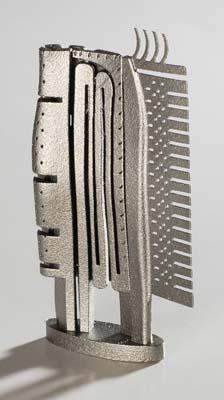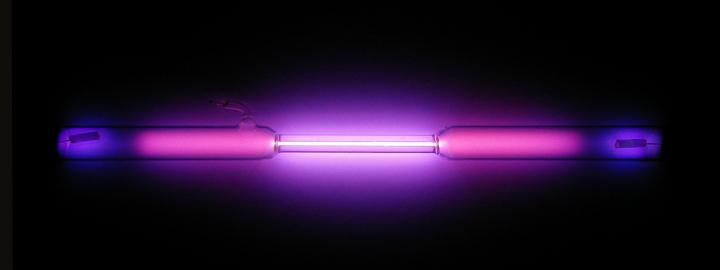Industrial Gases Key to Metal Additive Manufacturing — Air Products Launches Website to Guide Industry
 In selective laser melting and similar processes, thin layers of atomized, fine metal powder are distributed using a coating mechanism onto a substrate plate attached to an indexing table that moves in the Z axis.
In selective laser melting and similar processes, thin layers of atomized, fine metal powder are distributed using a coating mechanism onto a substrate plate attached to an indexing table that moves in the Z axis.
The process takes place inside a chamber containing a tightly controlled atmosphere of inert gas, either argon or nitrogen, at oxygen levels below 500 parts per million, and powerful lasers then melt the powders layer-by-layer to create metal parts.
 Argon gas is the third most common gas in the Earth’s atmosphere. Its name comes from a Greek word meaning ‘inactive’ as the gas lacks chemical reactions. Colorless, odorless, tasteless, and non-toxic, argon is 38% more dense than air and it can displace the oxygen in an enclosed area. It’s often used as a shielding gas in welding, electron beam melting and sintering to prevent unwanted burning and oxidation.
Argon gas is the third most common gas in the Earth’s atmosphere. Its name comes from a Greek word meaning ‘inactive’ as the gas lacks chemical reactions. Colorless, odorless, tasteless, and non-toxic, argon is 38% more dense than air and it can displace the oxygen in an enclosed area. It’s often used as a shielding gas in welding, electron beam melting and sintering to prevent unwanted burning and oxidation.
In additive manufacturing, argon gas is used in selective laser melting as it creates the perfect environment for the process.
Now Air Products say they’ve launched a new website to guide additive manufacturers in the proper selection, supply mode, and purity of industrial gases like argon. The website provides technical information, online tools and information about gas supply options to help additive manufacturers optimize the industrial gases used in their metal printing processes.
One of the major challenges in metal additive manufacturing is building components in a controlled environment and minimizing the introduction of any possible impurities into the materials. Gases such as argon and nitrogen create an environment which allows parts to be built which meet the exacting standards required for metal parts used in the aerospace and automotive industries.
“Our range of industrial gases and purity levels will enable companies to experiment and grow with 3D printing technology, whether they are in start-up or full production,” says Justin Rabe, an Industry Marketing Specialist for Air Products.
The processes were developed in conjunction with Turbocam International, a manufacturer of precision metal parts for aerospace, automotive, and industrial applications. Turbocam uses high-purity argon in their 3D printing process, which they say helps prevent impurities, nitrides in particular, from contaminating the metals used as parts are built.
“Air Products has helped us improve our 3D printing on both an environmental basis and a day-to-day operational basis,” says Jonathan Bicknell, the general manager at Turbocam.
Air Products has more than 20,000 employees in 50 countries and had sales of $10.4 billion in 2014. Have you ever used a sintering machine which requires an inert gas environment? Let us know about your experience in the Gases Key to Metal Additive Manufacturing forum thread on 3DPB.com.
Subscribe to Our Email Newsletter
Stay up-to-date on all the latest news from the 3D printing industry and receive information and offers from third party vendors.
You May Also Like
Gorilla Sports GE’s First 3D Printed Titanium Cast
How do you help a gorilla with a broken arm? Sounds like the start of a bad joke a zookeeper might tell, but it’s an actual dilemma recently faced by...
Nylon 3D Printed Parts Made More Functional with Coatings & Colors
Parts 3D printed from polyamide (PA, Nylon) 12 using powder bed fusion (PBF) are a mainstay in the additive manufacturing (AM) industry. While post-finishing processes have improved the porosity of...
$25M to Back Sintavia’s Largest Expansion of Metal 3D Printing Capacity Since 2019
Sintavia, the digital manufacturing company specializing in mission-critical parts for strategic sectors, announced a $25 million investment to increase its production capacity, the largest expansion to its operations since 2019....
Velo3D Initiates Public Offering in a Bid to Strengthen Financial Foundations and Drive Future Growth
Velo3D (NYSE: VLD) has been among a number of publicly traded 3D printing firms that have attempted to weather the current macroeconomic climate. After posting a challenging financial report for 2023,...

































